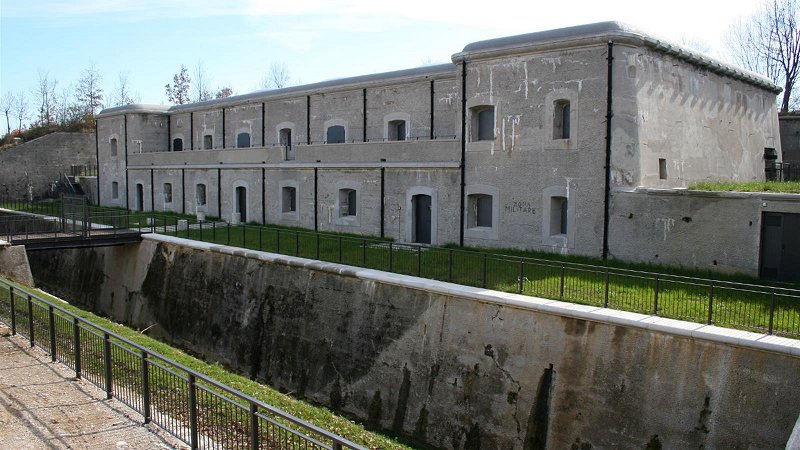AMONG THE DEFENSE BUILDINGS OF THE NORTH ADRIATIC WAR LANDSCAPE

Date: 26 September 2022
The Italian military fort of Col Roncone was part of the "Medio Tagliamento" defense line that stretched along the river of the same name to stop a possible Austro-Hungarian invasion. It was built between 1909 and 1912 to defend the bridges over the Tagliamento River, and inside it was divided into a kitchen, dining room, bedroom, and ammunition storage areas.
In the heart of the hilly part of Friuli, three forts (Col Roncone, Fagagna, and Santa Margherita) were planned to complement the other military positions in the area. Today we can only see the fort of Col Roncone, while the forts of Fagagna and Santi Margherita are inaccessible: the first because it does not have a path that bypasses the moat, and the second is still located in a military area.
The Col Roncone fortress is considered one of the best-preserved buildings from the First World War in Friuli-Venezia Giulia. You can explore the ground floor in its entirety, while the upper floor is inaccessible due to the collapsed stairs. Four steel cannons with a diameter of 149 mm were installed in it, which covered all four sides with six smaller ones (75 calibers). During the renovation, fiberglass domes were installed in the places where the cannons stood until 1915.
The decline of the Col Roncone fort, like most of the forts in Friuli Venezia Giulia, began shortly before the outbreak of the First World War when the need to strengthen the artillery at the front required the removal of cannons and usable iron from the forts. The fort thus never served its original purpose. It experienced its "baptism of fire" in 1913, but only for the needs of military exercises.
The fortress was reopened to the public on May 18, 2018, and today it is a cultural and artistic space and a starting point for various excursions.
USEFUL INFORMATION:
Difficulty level: the easy path
Walking time: about 1 hour
Equipment: hiking boots with profiled soles, long trousers
Maybe you didn't know?
- The thematic Walk of Peace leads through the Friuli-Venezia Giulia region, which subtly connects the heritage of the Soča Front on both sides of the border, gradually building a unified tourist area. The themed route with museums, authentic caverns, and trenches is dedicated to all those who suffered in the First World War and reminds us why wars must not happen anymore. Above all, it promotes the value of peace and opportunities for joint development - for cooperation and reconciliation between once warring nations
- Despite the centuries-long influence of larger nations and Italian fascism, which organized the planned alienation of indigenous peoples, the Friulian and Slovene cultures and the German-Austrian minorities managed to preserve their language in the area of the Friuli-Julian region.
- In the wider area of the Col Roncone fortress, defense systems have been built over the centuries in various conditions, and very original and functional solutions have also been created. In this area, battles were fought between great empires, smaller communities, local lordships, free cities, and political regimes, and therefore this area became one of the most sensitive and strategic nodes where the defensive military architecture was forced to use all the systems of warfare that invented by mankind - from archery and large artillery units during the First World War to atomic weapons during the Cold War.
- The Soča Front (1915-1917) was also held in the area of Friuli-Julia, which is considered the scene of one of the bloodiest and also the biggest conflicts in the mountain area in the entire history of mankind. In 888 days, as many as 1.5 million soldiers and 73 thousand horses fell in an area of 93 kilometers. The First World War was a great crossroads of nations, and during the Soča Front, more than twenty nations, four different religions, and eighteen languages fought.
 Our stories
Our stories